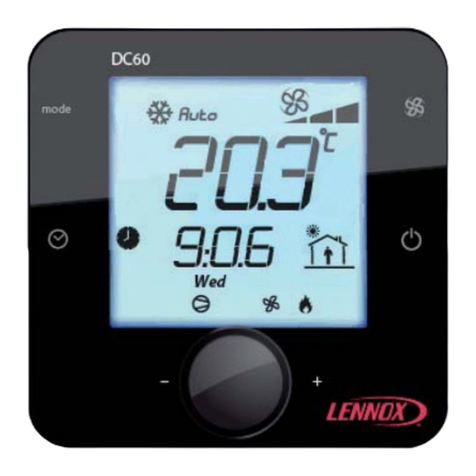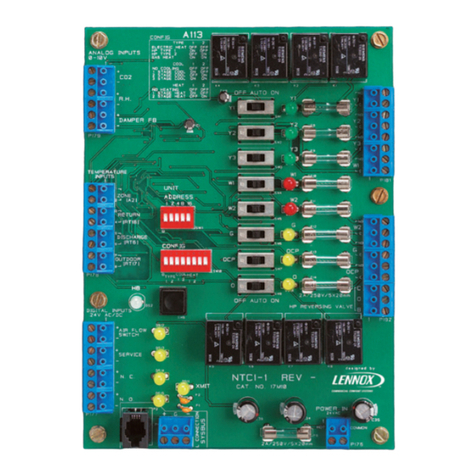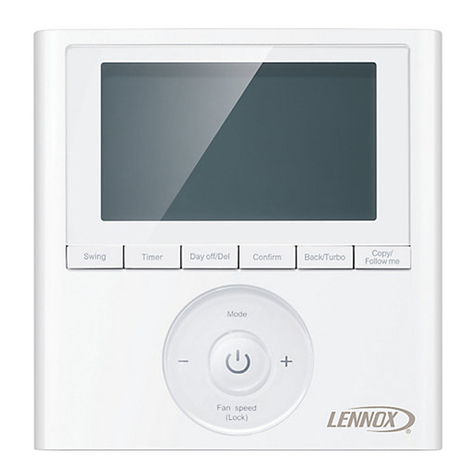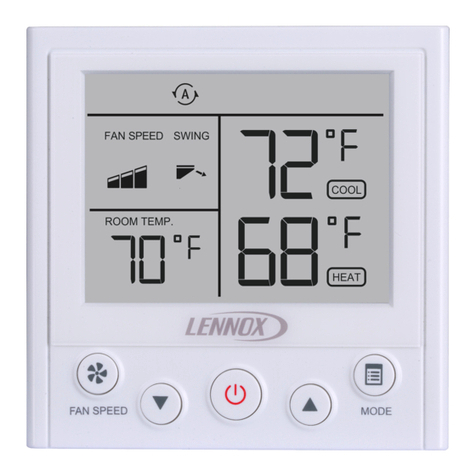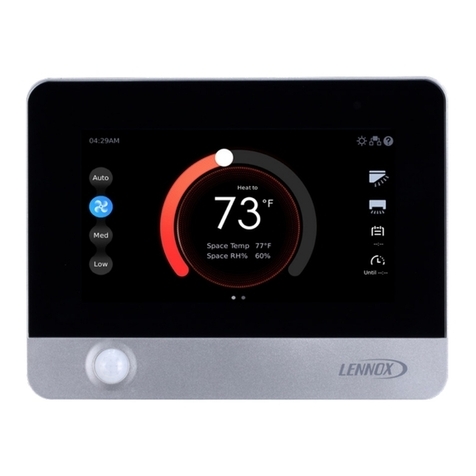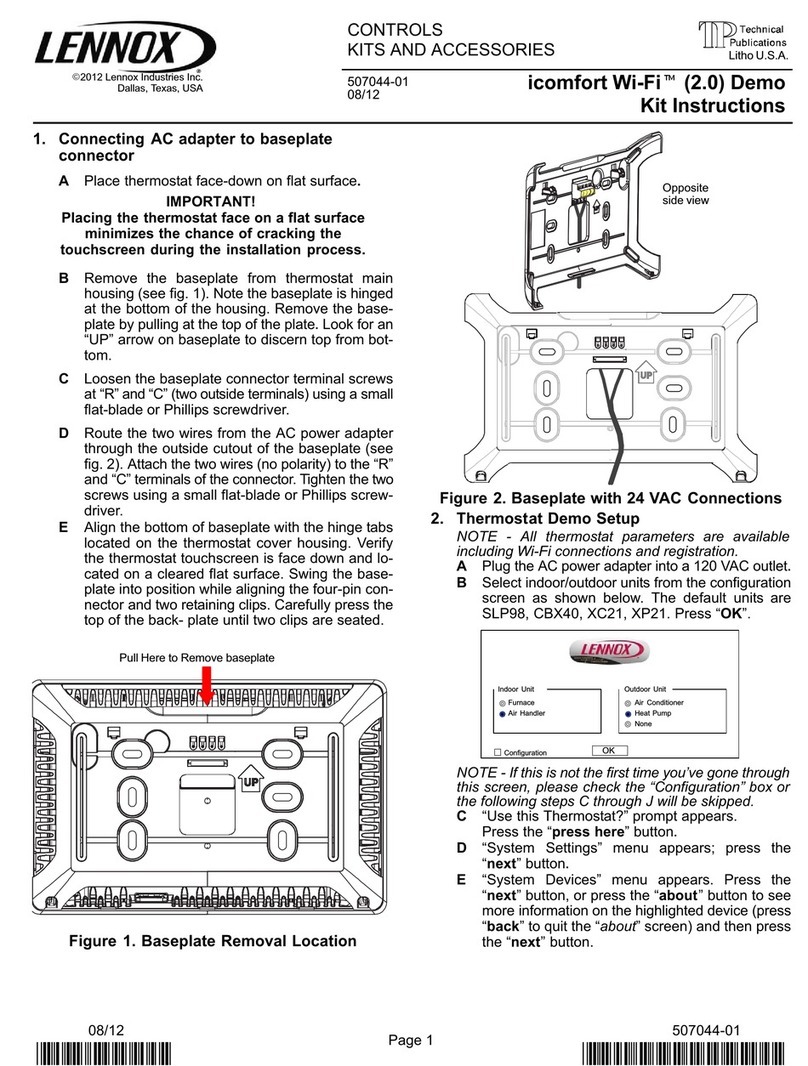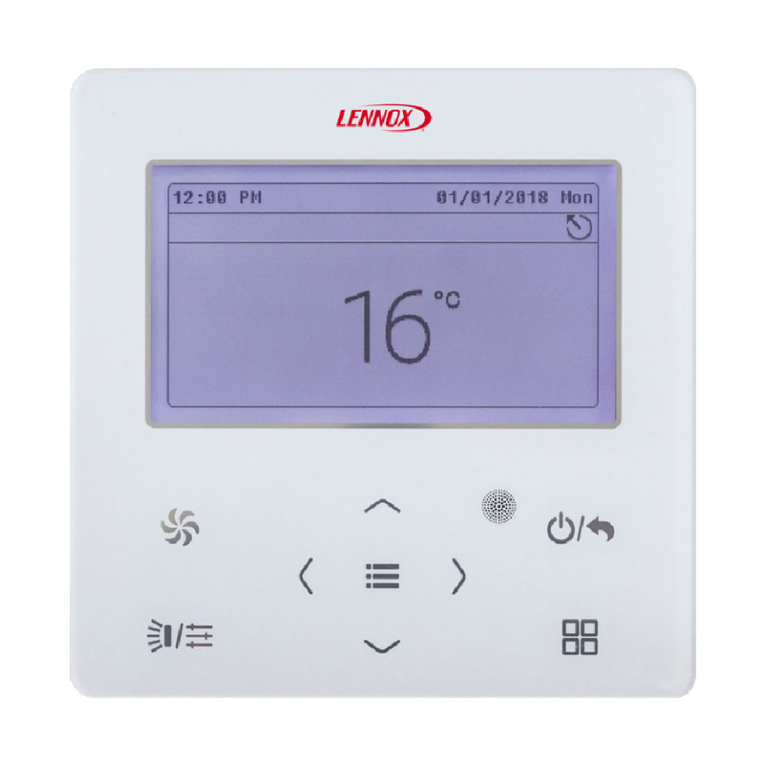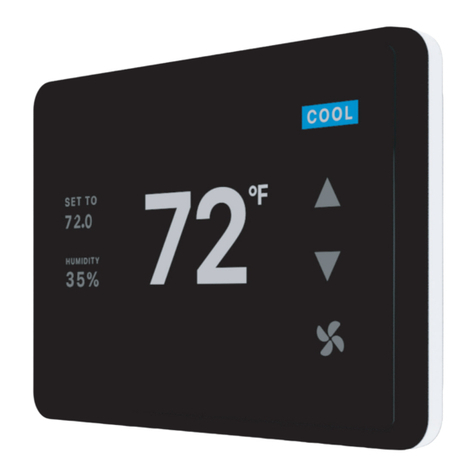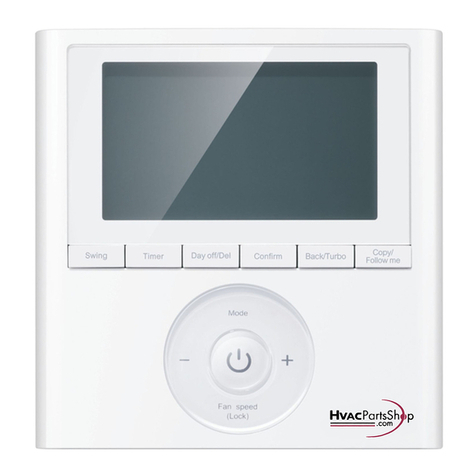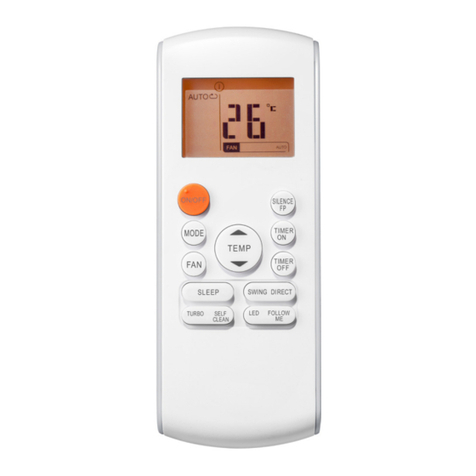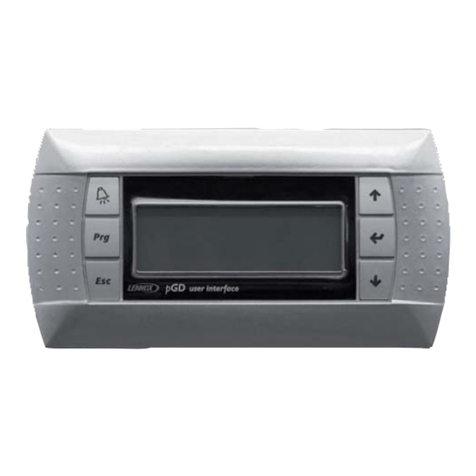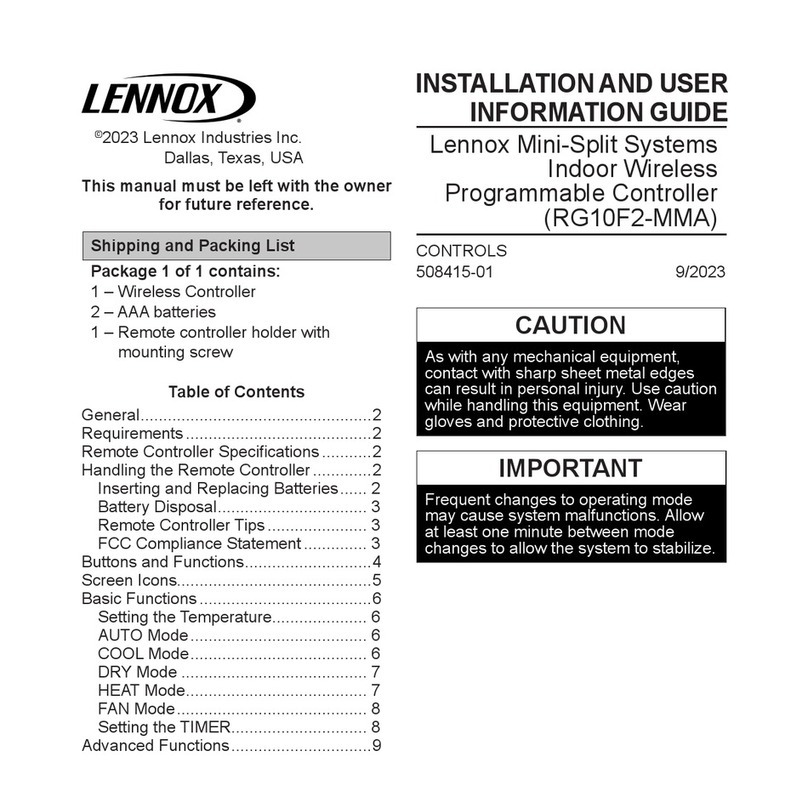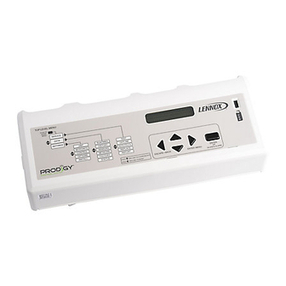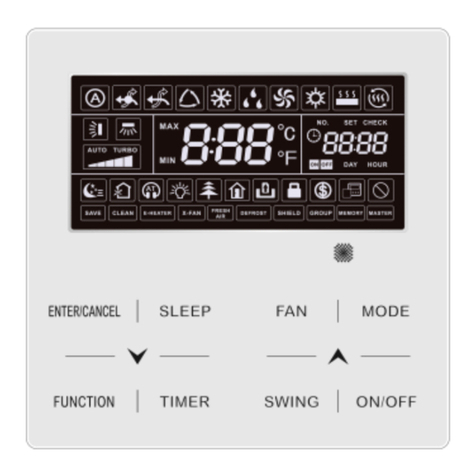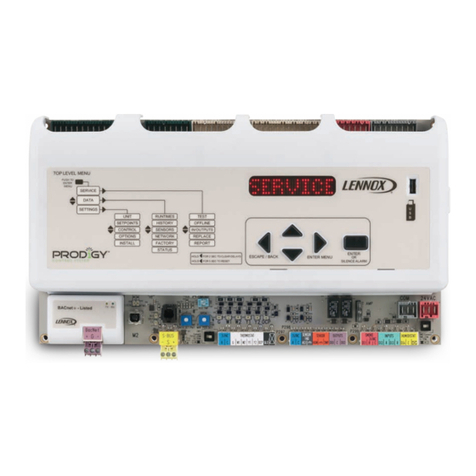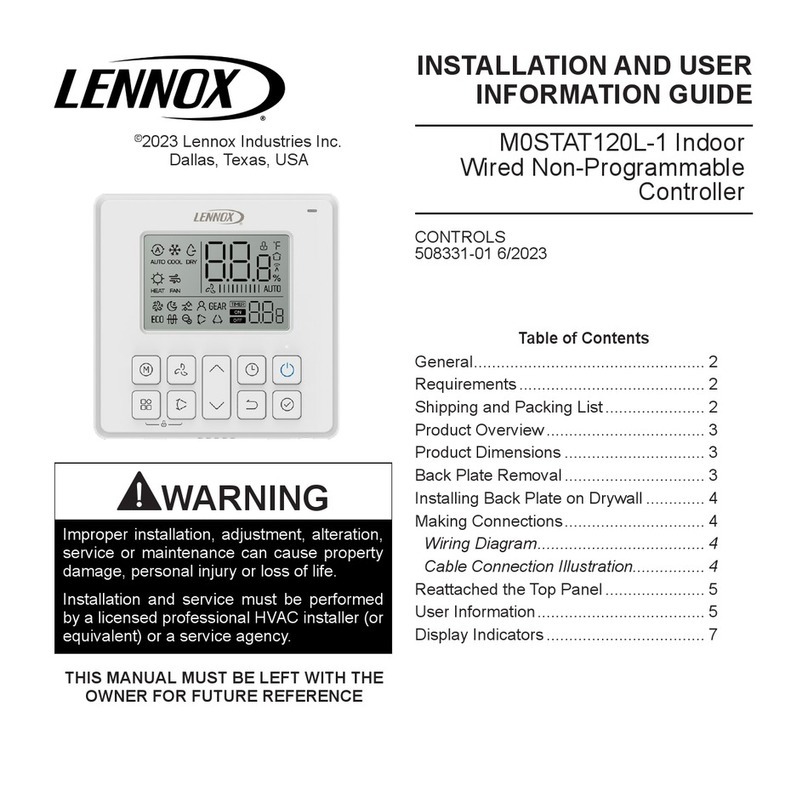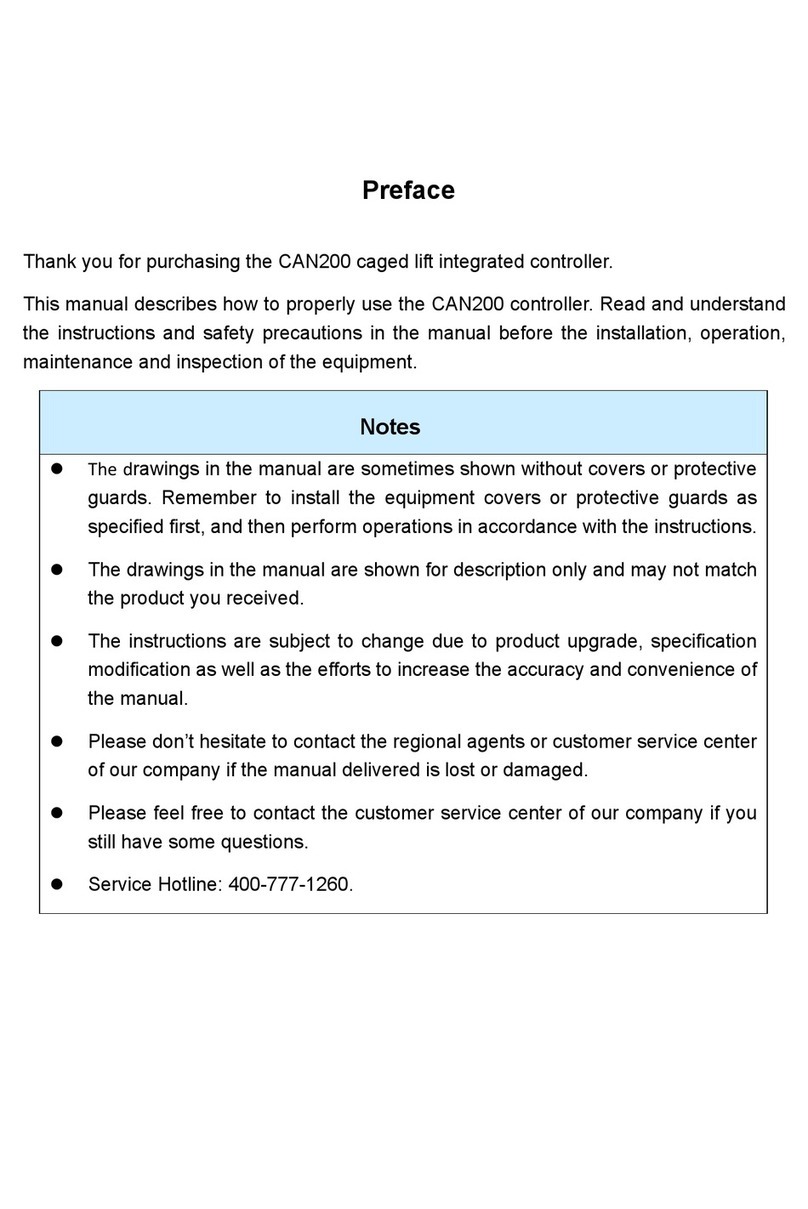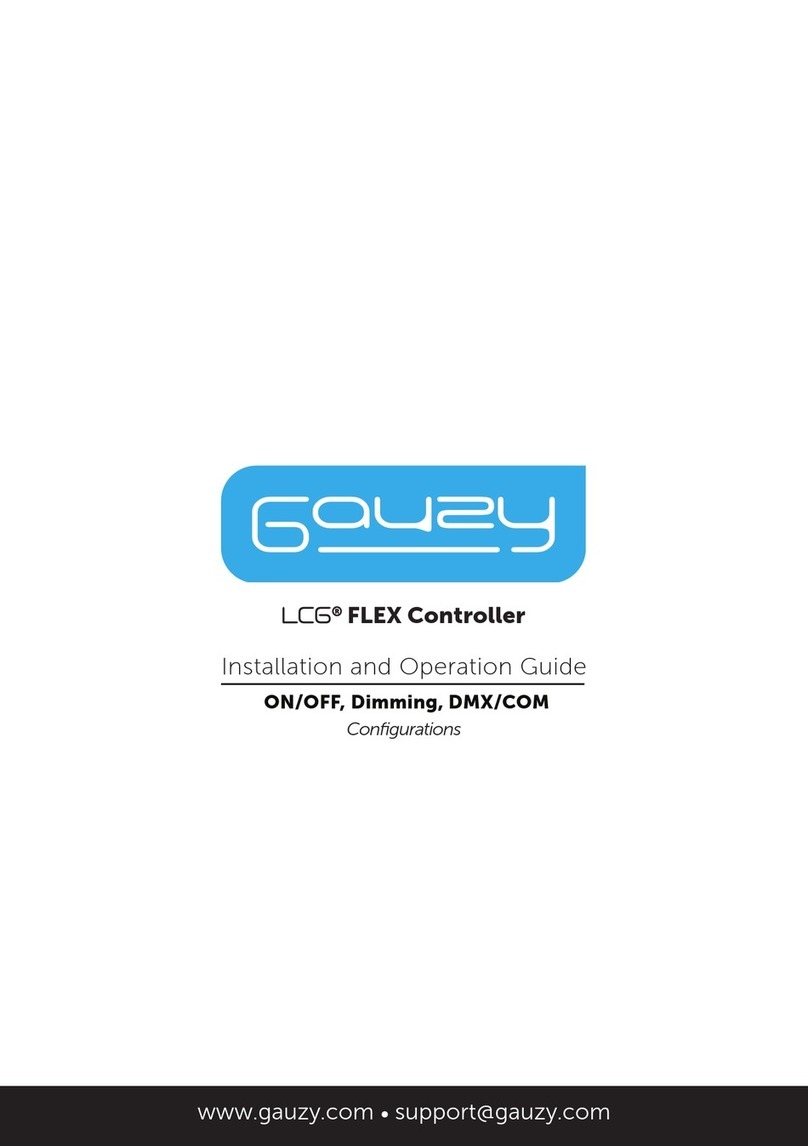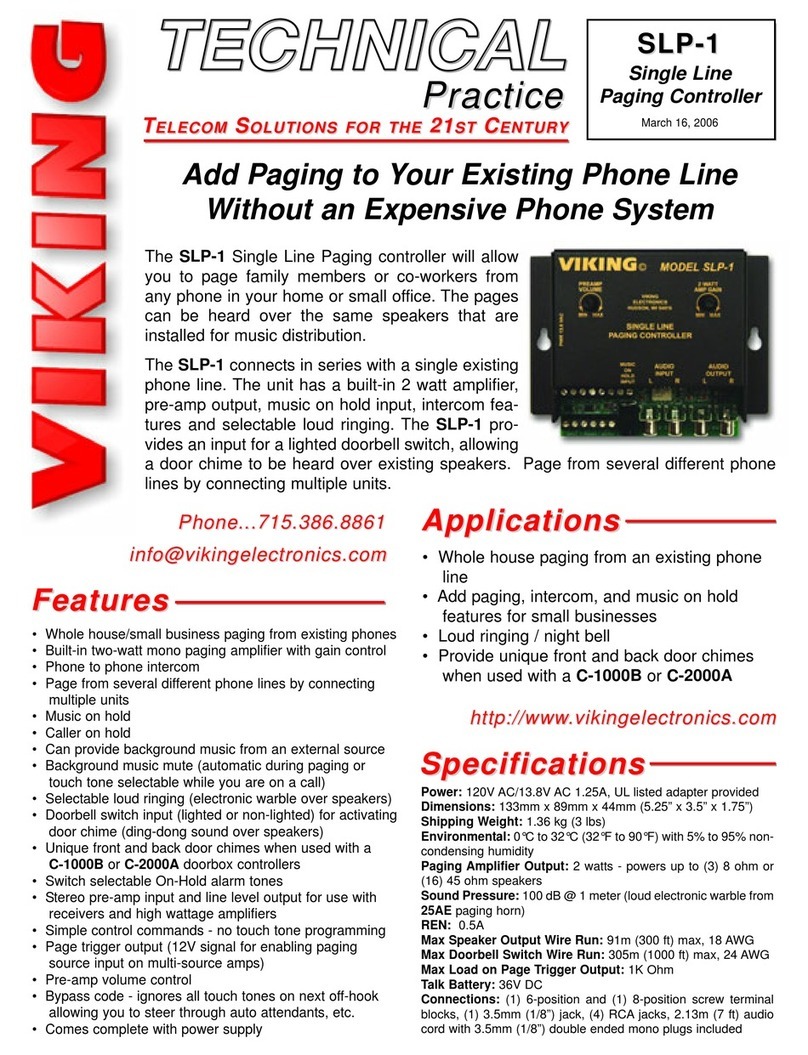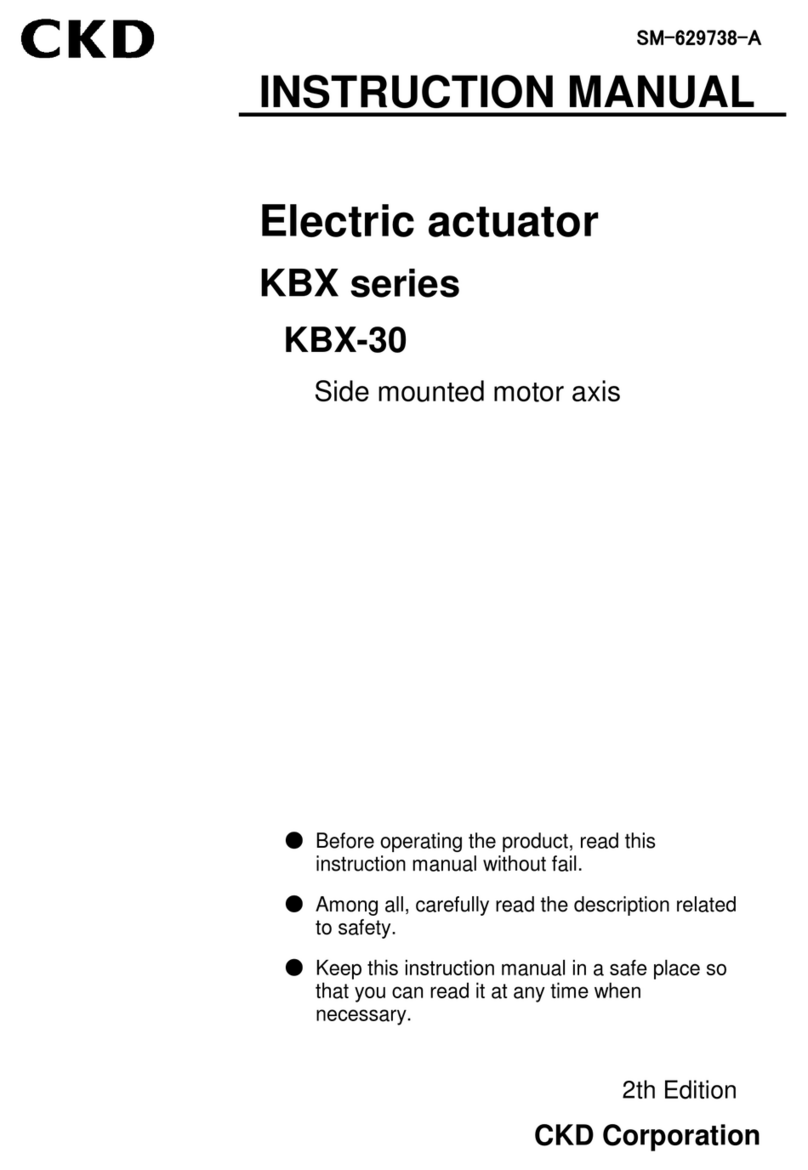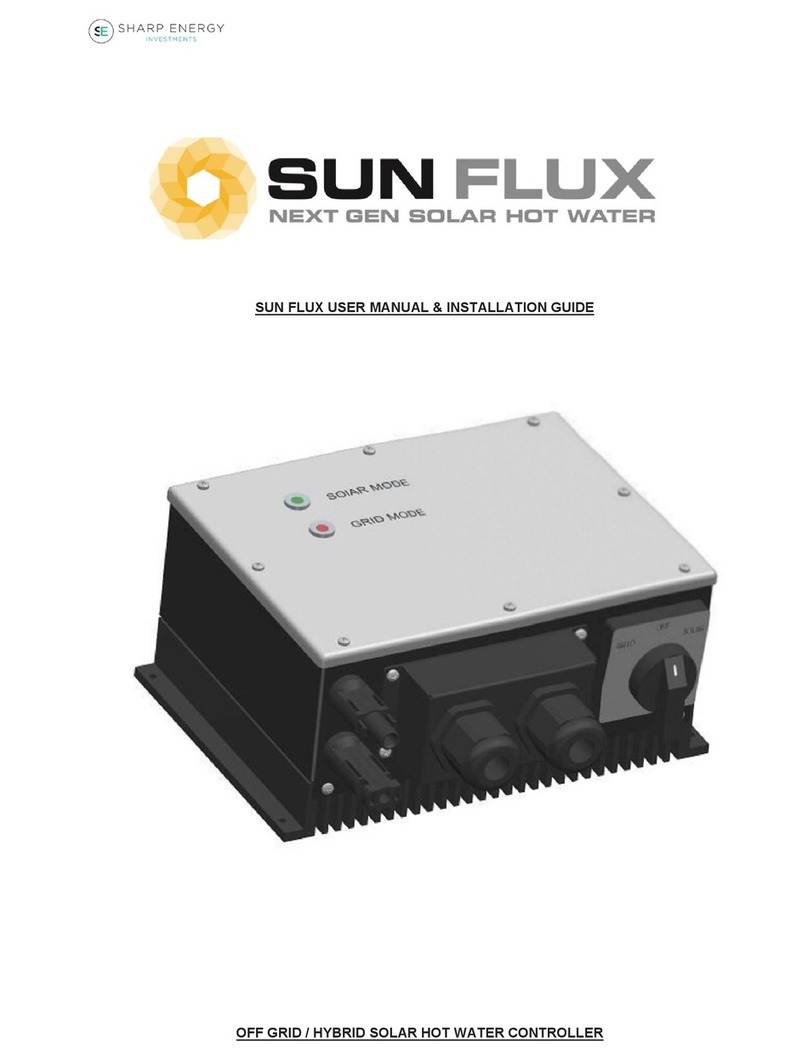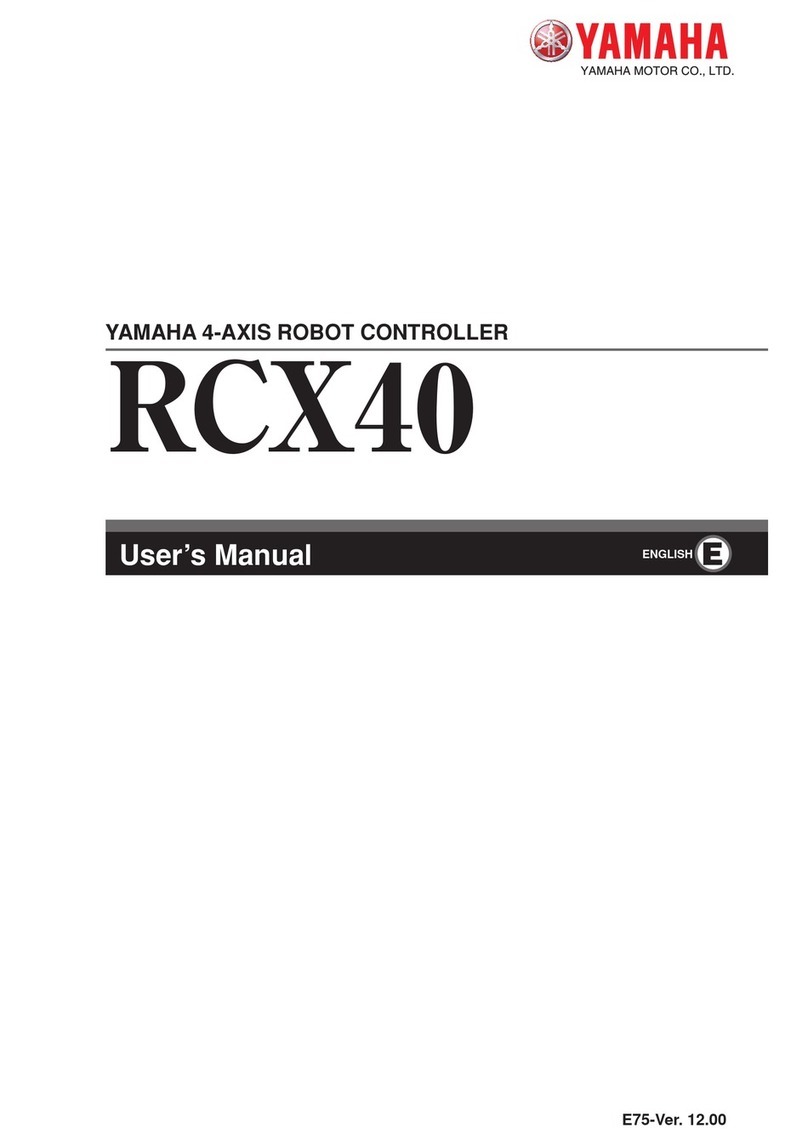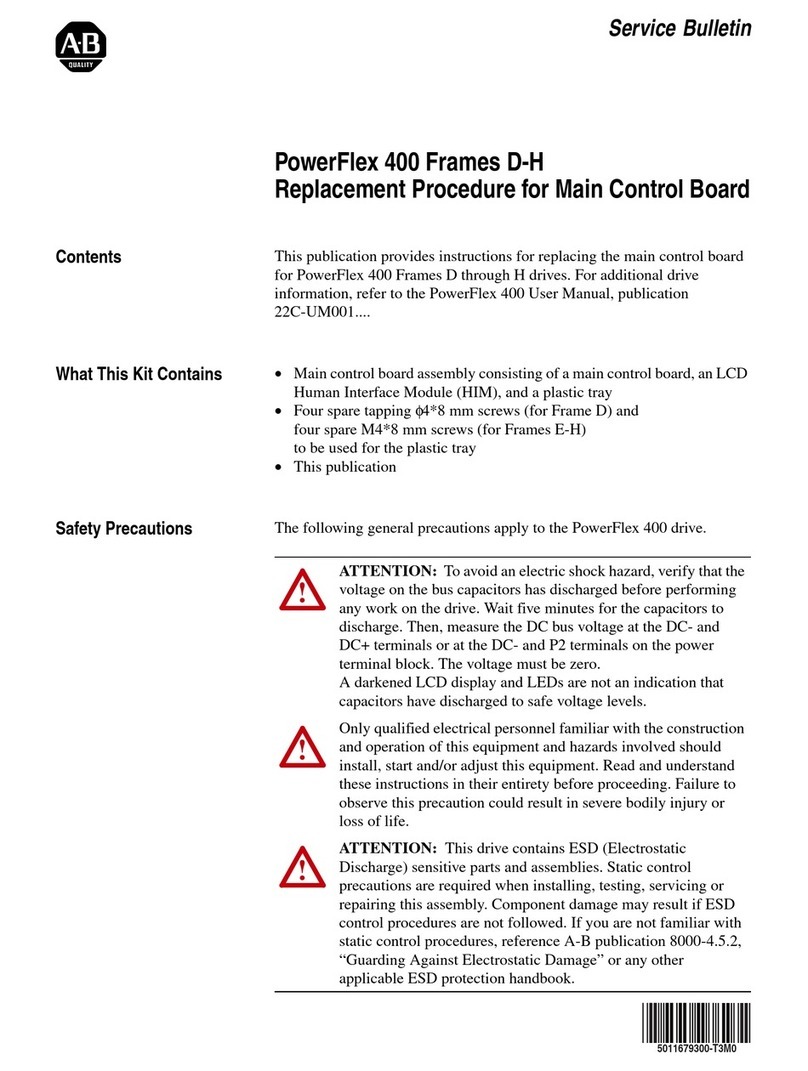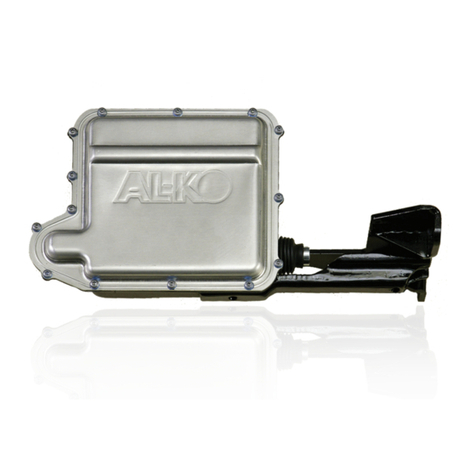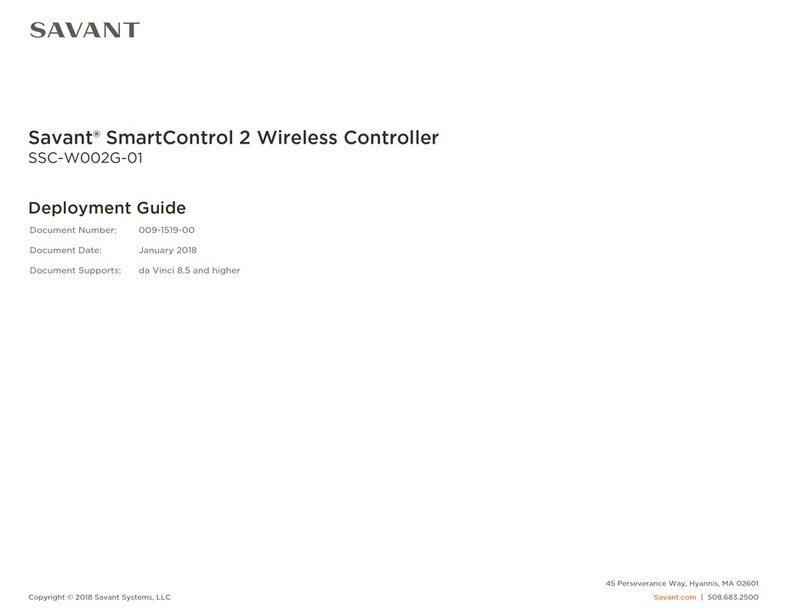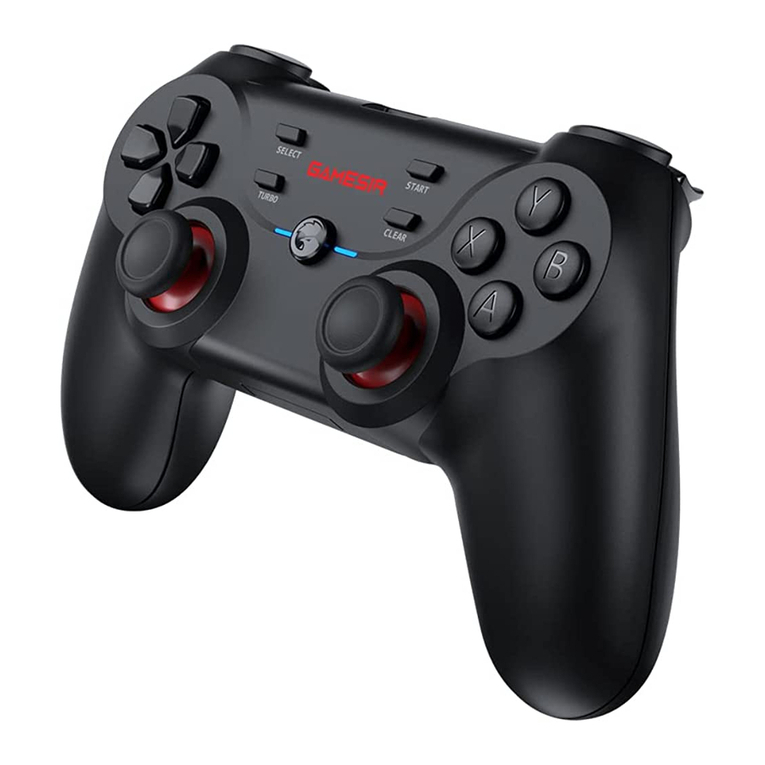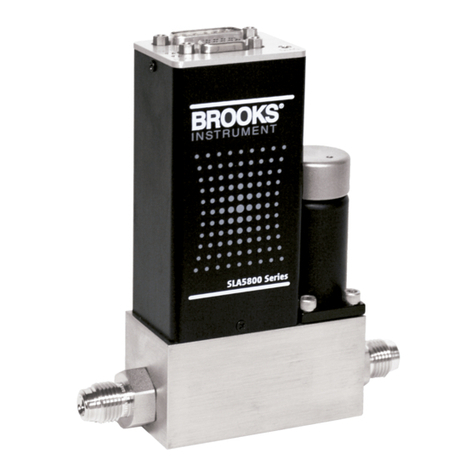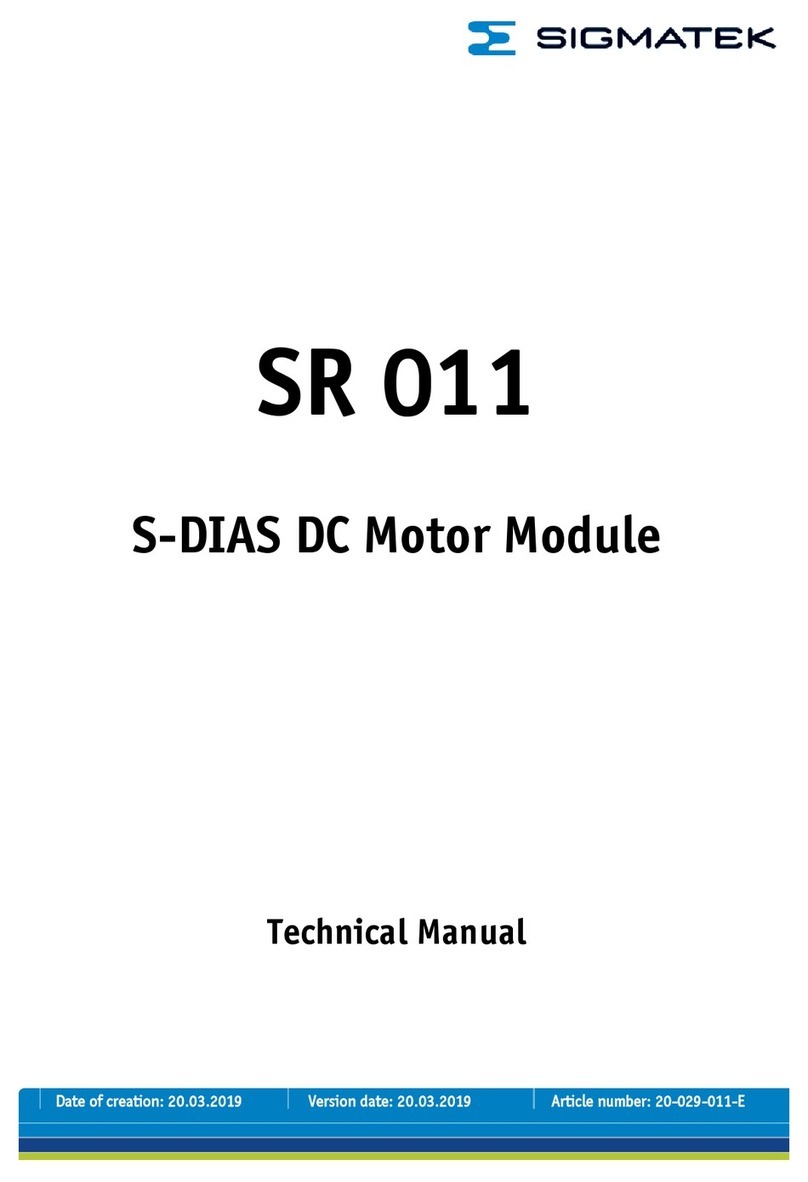
IOM / @DNOVA-µAC-0907-E - Page 5
INSTALLATION
The I/O (Input/Output) board
Fig. 3 shows the I/O board.
With reference to this gure, we can see:
- in the lower part the Molex connectors (1 - 2 - 3), for the
main connections;
- in the upper part, the 2nd male connector from the left, to
insert the key for programming the µAC or copy the existing
data;
- the tting for the clock board (optional);
- the tting for the RS485 serial board (optional);
- in the centre of the board, the jumper for selecting the hardware
of probe B3 (4÷20mA/ 0÷1Vdc), with default 0÷1Vdc.
Fig. 3
Digital inputs Connector 2
ID1 Remote ON/OFF (HE=1)
ID2 Flow controller
ID3 Filter dirty
ID4 Heat. Element safety
ID5 External alarm/ input for rotation of a series of
units rotation of a series of units (depends on
Pb-H2-HA)
ID6 No power alarm
ID7 High press.C1
ID8 Low press. C1
ID9 Comp. thermal
ID10 Fan thermal (H5)
Analogue inputs - Connector 2
B1 Inlet temp. Temp.
B2 External air temp. for free cooling (/1,Hc)
B3 Condens. press. (/2,Hd,Hb)
B4 Supply temp. (/3=1)
SSR digital outputs - Connector 1
Out1 Compressor
Out2 Heating element
Out3 Damper+(/2, Hc) Damper ON/OFF
Out4 Damper - (/2, Hc)
Out5 Supply fan
Relay digital outputs - Connector 3
Out 6 Alarm (HF)
Out 7 Alarm (HA) Rotation control (H2)
Analogue outputs - Connector 1
Y1 Damper output (/2,Hc)
Y2 Condensation fan (/1,/2,Hb,Hc)
key
Meaning of the inputs and the outputs
The following table (P. 6) describes the meaning of the inputs and the outputs according to the type of machine selected.
Telecom= precision unit complete with condenser and without humidier.
Inputs and outputs I/O
INSTALLATION
Initial start-up procedure
To install the control, proceed as indicated below, with
reference to the connection diagrams provided.
1. connect the probes and power supply: the probes can be
located up to a maximum distance of 50 metres from the
control, using cables with a minimum cross-section of 1mm2;
to improve immunity to disturbance it is recommended to use
shielded cables (connect one end only of the shield to the
ground on the electrical panel).
2. Program the instrument: for a more in-depth description
see chapter 5, “Programming”.
3. Connect the actuators: it is suggested to connect
connectors 1 and 3 only after having programmed the control.
On this subject, iavoid to connect loads exceeding the relay
rating.
clock opz. serial RS485 opz.
jumper B3 selection
0 + 1 Vdc
fuse 800 mAT

